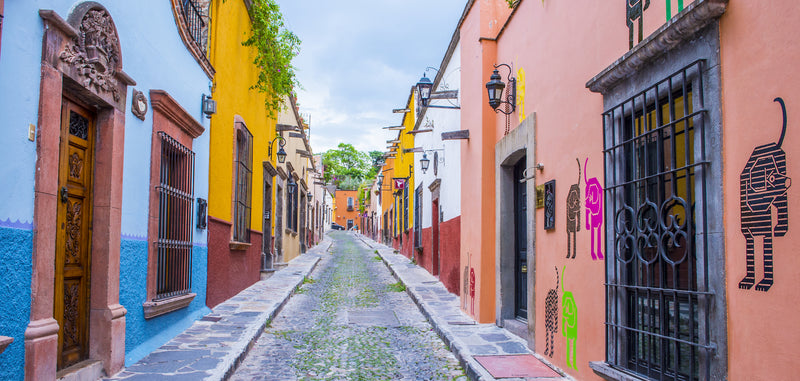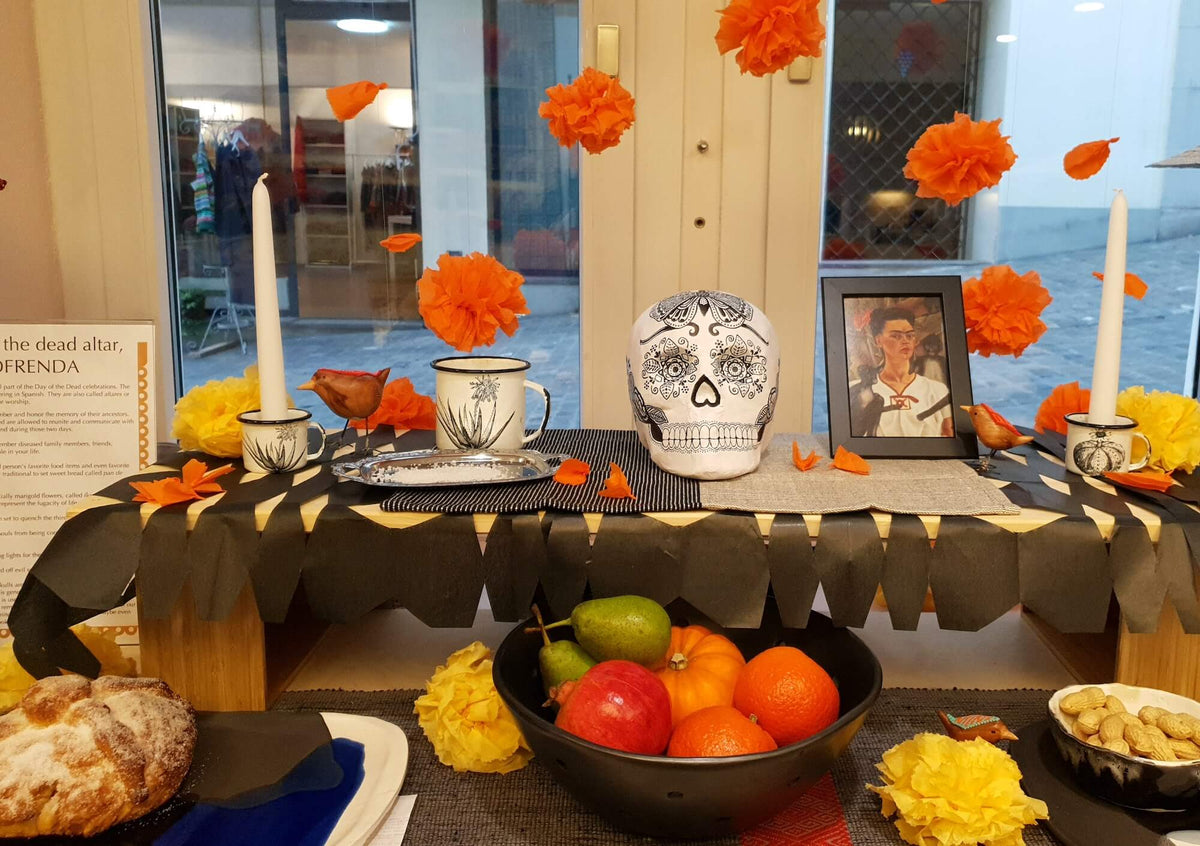Day of the dead, remember your loved ones the Mexican way
A few years ago when we were participating in a day of the dead event in Zurich, there was a beautifully decorated big altar in front of the event hall. I saw an old lady enter the building and she approached me asking about what kind of event it was... So, I thought the best way was to show her the altar and explain the different elements we use to decorate it. She looked at it for a while and told me at the end "what a beautiful way to remember your loved ones, my son died very young and I would love to honor him in such a nice way."
So, we would love for you to get inspired, and set up an altar your own way, we will explain the key elements we use for an altar, but feel free to add anything that becomes meaningful to you. If you want, please share with us your picture via email or in social media using the hastag #32dayofthedead
Ofrendas and Altars
Ofrendas are an essential part of the Day of the Dead celebrations. The word ofrenda means offering in Spanish. Altars are the multi layer set up where the offer is placed. Altars and ofrendas are not for worship, they are set up to remember and honor the memory of their ancestors. The spirits of the departed are allowed to reunite and communicate with the people they left behind during those two days. If you want to learn more about the meaning, read our blog Day of the dead: what is it celebrating?
Altar Elements

Photos: to remember diseased family members, friends, important people in your life.
Food: deceased person's favorite food items and even favorite spirits. It is very traditional to set sweet bread called pan de muerto.
Flowers: especially marigold flowers, called flor de Cempasúchil, represent the fugacity of life among others. It’s one of the more prominent yet complex symbols used due to the many meanings. Learn more about them and how to make your own paper version here.
Water: they are set to quench the thirst of the souls
Salt: stops the souls from being corrupted by earthly temptations.
Candles: guiding lights for the souls.

Incense: to ward off evil spirits.
Pan de muerto: Sweet bread representing the cycle of life, and bones of the body.
Calaveras: or skulls are representations if diseased relatives. The word calavera is generally used playfully: in the different contexts that it is used, it does not have a gloomy or macabre connotation. Calaveras remind us of the transitory nature of life, that our time here on Earth is limited, and that it's acceptable (and maybe even desirable) to play and poke fun at ideas about death.

Planning your altar decor





0 comments